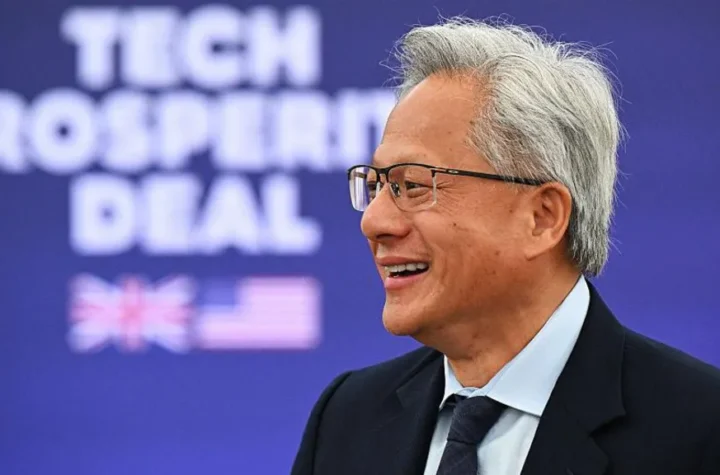Despite ongoing geopolitical tensions, Nvidia continues to ride the wave of the global AI boom. The chipmaker reported $46.7 billion in revenue for the second quarter of 2025—a 56% increase compared to the same period in 2024.
However, concerns about US-China trade restrictions caused Nvidia’s shares to dip slightly in after-hours trading. The company acknowledged it is still “working through geopolitical issues” tied to ongoing export controls and policy changes.
Dominating the AI Chip Market
Nvidia’s cutting-edge chips remain at the core of the AI revolution, with surging demand from major tech companies like Meta (Instagram’s parent company) and OpenAI—the developer behind ChatGPT.
“The AI race is now on,” said CEO Jensen Huang during an analyst call following the earnings release. He noted that annual AI spending among four major tech players has doubled to $600 billion, adding that AI would eventually “accelerate GDP growth.”
“Our contribution to that is a large part of the AI infrastructure,” Huang said.
Record-Breaking Growth—With One Blemish
Nvidia’s data center division, a key revenue driver, also saw a 56% increase, bringing in $41.1 billion. Despite the strong number, it came in slightly below some analyst forecasts.
This shortfall contributed to a minor drop in Nvidia’s stock. Still, many experts remain bullish.
“Nvidia is at the heart of this AI boom,” said Colleen McHugh, Chief Investment Officer at Wealthify, in an interview with the BBC. “It’s really largely unchallenged in the market for AI chips.”
She added that the company’s reliance on tech giants means its performance is closely tied to their continued investment in AI.
Investor Eileen Burbidge, founding partner at Passion Capital, called the company’s growth “unbelievable” but also warned of signs of an overheated market.
“There’s been so much capital that’s gone in, I don’t think it’s unfair to say there’s been too much exuberance—or even a bit of a bubble,” she said.
Nvidia Eyes $54B Next Quarter
Looking ahead, Nvidia expects even greater performance. It projected $54 billion in revenue for the current quarter—beating Wall Street estimates and signaling that AI demand remains robust.
In July, Nvidia also became the first company ever to reach a $4 trillion market value, underlining its dominance in the semiconductor and AI sectors.
The China Factor
Still, Nvidia’s global operations face increasing complications from US-China trade restrictions.
Earlier this summer, Nvidia resumed efforts to sell its H20 AI chips—designed specifically for the Chinese market—after successful lobbying led the Trump administration to lift a ban. The ban had been imposed due to fears that these chips could aid the Chinese military.
Even with the partial greenlight, Nvidia revealed that no H20 chips had shipped as of late August, though some China-based clients have received licenses. The US government is set to take 15% of the revenue from these licensed sales.
Nvidia said it has excluded H20 chip sales from its revenue projections for the current quarter and is currently lobbying for approval to sell its newest Blackwell chips in China—the world’s largest chip market.
“US export restrictions are fuelling domestic chipmaking in China,” said Jacob Bourne, an analyst at Emarketer, following the report.
He noted that China is ramping up efforts to develop homegrown alternatives to Nvidia’s chips, potentially challenging its global leadership.
What’s Next for Nvidia?
Analysts are watching whether Nvidia’s expansion into robotics will help it maintain its position as the “bellwether of the AI economy.” For now, despite supply chain challenges and global trade tensions, Nvidia remains the dominant force powering the AI era.











More Stories
Poor Engineering Led to Titan Submersible Implosion, Say US Authorities
Faisal Islam: Can the US Tech Bromance Revive the UK Economy?
Nvidia Boss Predicts UK Will Become an “AI Superpower” as Tech Giants Pledge Billions